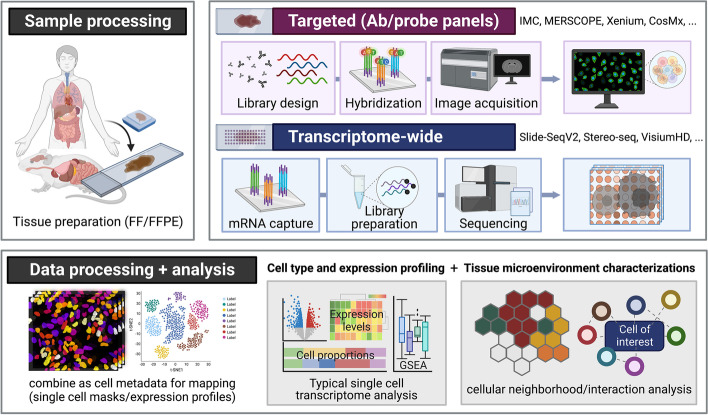Fig. 1.
Typical workflow of spatial omics experiment. Most technologies offer compatibility with flash frozen or formalin-fixed paraffin embedded tissues. If in situ capture-imaging methods are chosen, a customized set of antibodies or probes will be hybridized to acquire or reconstruct images of multiple channels. With sequencing-based methods, barcoded regions within the slide will be captured for library preparation and sequencing. The downstream analyses are similar across technologies; once the signals are normalized, quantified, and pooled for each cell defined by the cell segmentation masks. Standard analyses such as differential expression, cell proportion, and gene set enrichment can be performed. Using spatial information in particular, cell–cell interaction and ligand-receptor analyses can be performed in-depth. Such information can also be used to define neighborhood or domains of tissue microenvironment, depending on the research question. Figure created with BioRender

